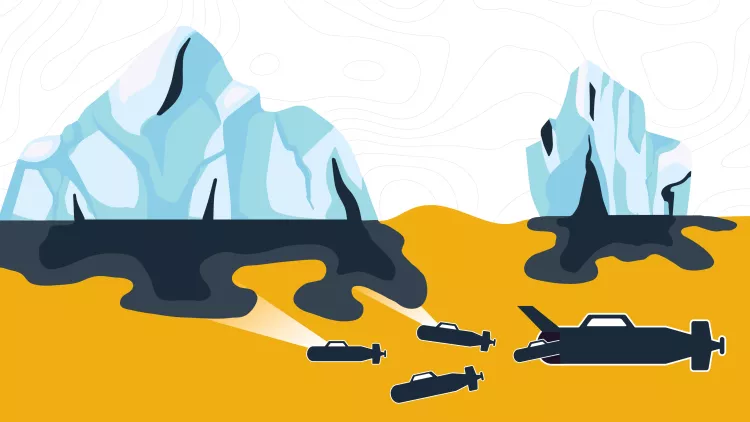Deploying marine robots to boost climate change research
Imagine a fleet of marine robots, controlled by an intelligent mothership, being deployed to explore inaccessible ocean ice depths, in a bid to further our understanding of climate change. Scientist Xi Yu from West Virginia University has made headway into making this vision a reality.
Scientists believe that the ice shelves under the sea ice hold the keys to further our understanding of climate change. Unfortunately, diving to such areas to explore them is impossible.
How, then, can we access these areas?
Scientist Xi Yu from West Virginia University may have found the answer. She suggests deploying a fleet of marine robots, controlled by a smart mothership, to reach these inaccessible depths and transmit back invaluable insights.

Working with oceanographers and engineers across the nation, Yu is set to push the boundaries of exploration in the name of science. She has already secured support from the National Science Foundation for her three-year project.
The mission is clear: to develop cutting-edge technologies to command swarms of "passenger robots" poised for release by their autonomous mothership into the frigid, uncharted underwater world. These robots, in harmonious synchronisation, would harvest critical data from the heart of ice shelf cavities.
Versatile fleet size
Yu envisages a dynamic expedition requiring anywhere from a modest ten to a formidable hundred passenger robots, collectively forming a symphony of discovery—a "coordinated communication network."
"We aim to observe the enigmatic activities transpiring within those cavities, enabling scientists to achieve greater comprehension and predict glacier loss and the ensuing rise in sea levels," said Yu.
The invaluable insights collected can help scientists unravel the complex narrative of ice shelf melting, glacier stability, and the inexorable flow of ice into the unfathomable abyss of the ocean.
Other uses
Beyond scientific research, Yu’s system can be used in other capacities: to detect and monitor diverse underwater phenomena, from burgeoning algal blooms to post-disaster scenarios, such as those arising in the wake of catastrophic oil spills.




























